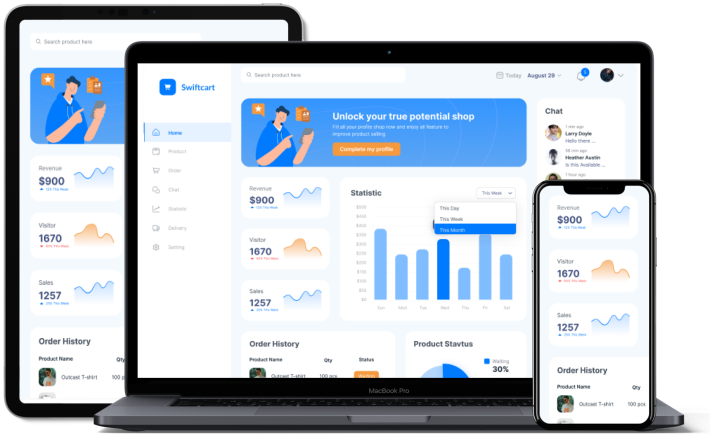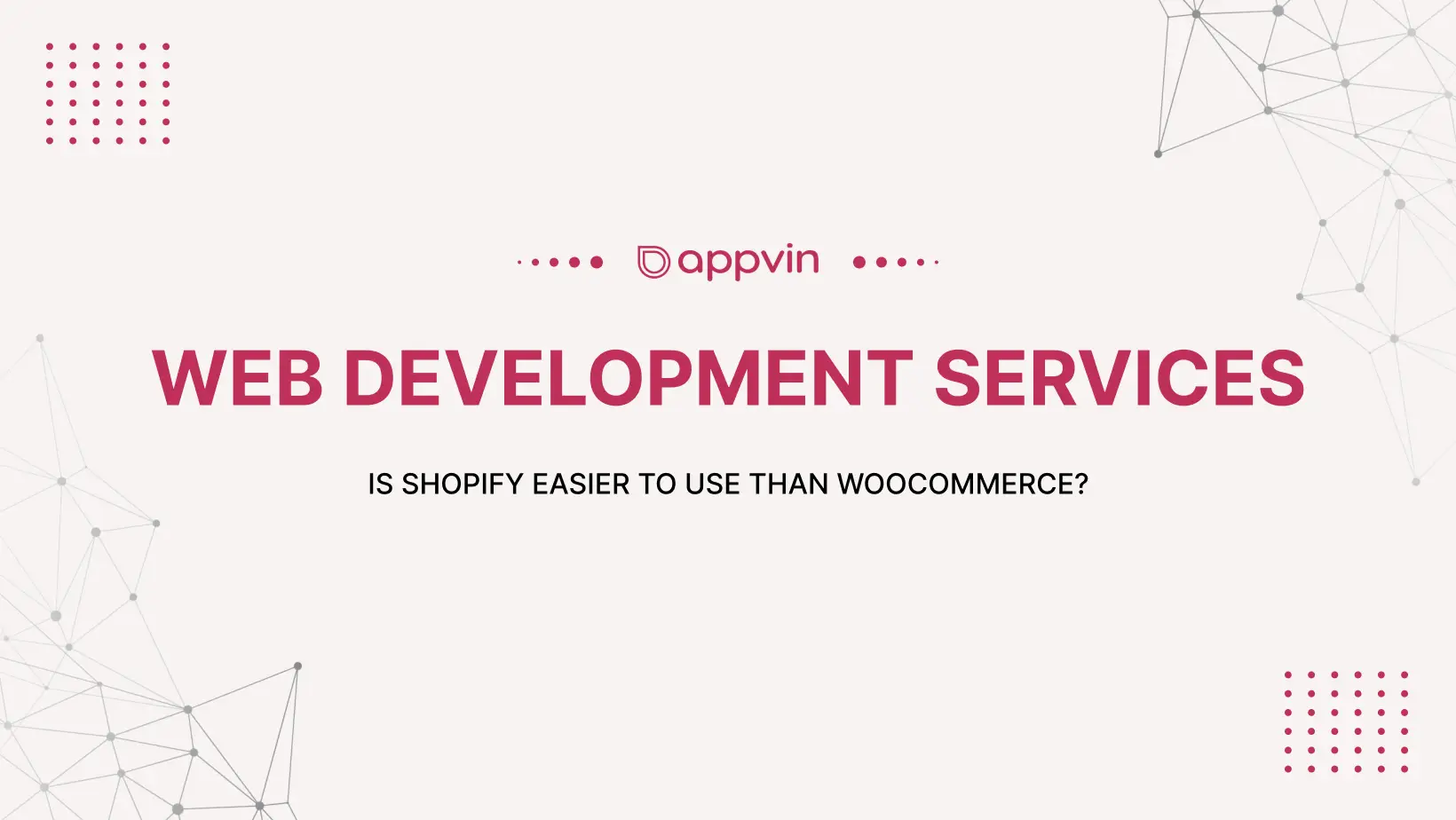What is Angular 17?
Angular 17, released in November 2023, was a major version of the popular web application framework developed and maintained by Google. It introduced several key features and improvements that made it a significant update for developers.
Angular 17 came with some awesome upgrades to the framework, making it faster, packed with more cool features, and even friendlier for developers.
Furthermore, these upgrades were designed to simplify developers’ lives, empowering them to craft cutting-edge, scalable, and lightning-fast web applications effortlessly using Angular. Additionally, the new features introduced in Angular 17 aimed to streamline the development process while enhancing application performance.

What is Angular used for?
Furthermore, Angular acts like the digital architect behind the scenes, making captivating single-page applications (SPAs) and different web apps come to life online. Additionally, some key areas where Angular excels and is commonly used include:
Single-Page Applications (SPAs):
Angular’s core strengths lie in developing complex, modern SPAs. SPAs load fully client-side, providing a smooth and responsive user experience akin to native applications. Popular examples include Gmail, Google Drive, and many modern web apps.
Enterprise Web Applications:
Moreover, Angular’s robust feature set, including dependency injection, modular structure, and strong typing with TypeScript, make it well-suited for building large-scale, mission-critical enterprise web applications with intricate logic and complex user interfaces. Additionally, these features also facilitate maintainability and scalability of the codebase over time.
Progressive Web Apps (PWAs):
With Angular’s capabilities and the added support for PWA features like service workers and web manifest, developers can build PWAs that combine the best of web and native applications, offering offline support, push notifications, and installability.
Cross-Platform Applications:
Moreover, Angular’s ability to render across platforms using technologies like NativeScript (for building truly native mobile apps) and Electron (for building desktop applications) allows developers to leverage their Angular skills to create applications beyond the web browser. Additionally, this cross-platform capability provides a consistent development experience and code reusability, further enhancing productivity.
Dynamic Web Applications:
Angular’s strong data binding, smooth routing, and component-based structure make it a fantastic choice for constructing lively, data-powered web applications.Consider it your go-to tool when you want your website to stay current in real-time and provide users with smooth and effortless navigation.
Content Management Systems (CMS):
Angular’s modular structure and separation of concerns facilitate the development of flexible and extensible content management systems, allowing for easy integration of custom functionality and third-party libraries.
While Angular is primarily used for web development, its versatility and the ability to leverage its core concepts across different platforms make it a popular choice for developers looking to build a wide range of applications with a consistent technology stack.

Here’s what Features Angular 17 offered
Angular 17 placed a strong emphasis on improving performance and enhancing the developer experience. Two notable features that contributed to these goals were deferrable views and built-in control flow.
Deferrable Views:
Developers could defer loading specific parts of their application until they were actually needed, significantly improving initial load times and enabling the application to render and become interactive more quickly. This approach not only optimized overall responsiveness but also reduced the initial overhead by loading resources only on-demand.
Deferrable views worked by leveraging Angular’s existing lazy-loading capabilities but providing a more granular and fine-grained control over what gets loaded and when. Developers could mark specific components or modules as deferrable, and Angular would handle the asynchronous loading and rendering of those parts as needed, without blocking the initial rendering of the application.
Built-in Control Flow:
Moreover, Angular 17 introduced a new block template syntax that simplified writing conditional logic and loops directly within the component templates. Additionally, this feature made it easier for developers to write more concise and expressive templates, ultimately leading to cleaner and more readable code.
Previously, developers had to rely on structural directives like `*ngIf` and `*ngFor` to handle control flow in templates. While these directives were powerful, they could sometimes lead to verbose and nested template structures, especially in complex scenarios. With the new block syntax, developers could use more familiar and intuitive constructs like `if`, `else`, `for`, and `while` directly in their templates, making the code more self-documenting and easier to reason about.
Other noteworthy features
Angular 17 introduced several other noteworthy features that further enhanced the developer experience and code quality. Let’s discuss the two features you mentioned:
Strict Mode by Default:
Angular 17 enabled strict mode by default, which enforced stricter coding practices and helped catch potential errors early in the development process. Strict mode in Angular involved several compiler checks and runtime checks that ensured adherence to best practices and prevented common coding mistakes.
Some of the key benefits of strict mode included:
- Better type checking: The compiler performed more rigorous type checks, catching type-related errors before runtime.
- Stricter binding checks:
- Additionally, Angular enforced stricter binding rules, preventing accidental mutations and ensuring better data consistency.
- Stricter dependency injection: The framework ensured that dependencies were properly injected and prevented common pitfalls related to dependency injection.
By enabling strict mode by default, Angular 17 encouraged developers to write more robust and maintainable code, reducing the likelihood of runtime errors and making it easier to catch issues earlier in the development cycle.
Optional Chaining:
Angular 17 adopted the optional chaining syntax (`?.`), which provided a safer way to access properties of potentially null or undefined objects. This feature greatly simplified code that dealt with nested object structures, reducing the need for verbose null checks and making the code more concise and readable.
Before optional chaining, developers had to use lengthy conditional checks or the safe navigation operator (`&&`) to ensure that an object and its properties were not null or undefined before accessing them. With optional chaining, this process became much more streamlined and intuitive.
For example, instead of writing:
“`typescript
const value = obj && obj.nested && obj.nested.property ? obj.nested.property : undefined;
“`
With optional chaining, developers could write:
“`typescript
const value = obj?.nested?.property;
“`
This not only made the code more readable but also reduced the likelihood of introducing bugs related to null or undefined object properties.
Developers widely embraced Angular 17’s default strict mode and optional chaining, as these additions promoted improved coding practices, elevated code quality, and enriched the overall developer experience. These features demonstrated Angular’s commitment to keeping up with modern JavaScript language features while also encouraging developers to write more robust and maintainable applications.

How to Upgrade to it?
Upgrading to a new major Angular version involves handling breaking changes and deprecations through a multi-step process.
Here’s a general guide on how to upgrade your Angular application to a new major version (e.g., Angular 17):
Check Prerequisites:
- Ensure you have the latest stable versions of Node.js and npm installed on your system.
- Update the Angular CLI to the latest version by running `npm install -g @angular/cli`.
Create a New Branch:
It’s recommended to create a new branch in your version control system (e.g., Git) to work on the upgrade. This way, you can safely test the upgrade without affecting your production code.
Update Angular Dependencies:
In your project’s root directory, open the `package.json` file and update the versions of Angular dependencies (e.g., `@angular/core`, `@angular/common`, `@angular/compiler`, etc.) to the new major version you want to upgrade to (e.g., `^17.0.0`).
Run `ng update`**:
In your terminal, navigate to your project’s root directory and run the following command:
“`
ng update @angular/core@17 @angular/cli@17
“`
This command will update your project’s Angular dependencies and perform any necessary migration steps. Follow the prompts and instructions provided by the Angular CLI.
Review and Resolve Issues:
The `ng update` command may report compatibility issues or required changes in your codebase. Review these issues carefully and make the necessary changes to your code to resolve them.
Update Other Dependencies:
Ensure you check whether any third-party libraries or dependencies used in your project need updating to align with the new Angular version. Update their versions in the `package.json` file and run `npm install` to install the updated packages.
Update Angular CLI Config:
If there are any changes required in the Angular CLI configuration (e.g., `angular.json`), make the necessary updates.
Test Your Application:
After completing the upgrade process, thoroughly test your application to ensure everything is working as expected. Run your unit tests, end-to-end tests, and manually test the application’s functionality.
Build and Deploy:
Successfully tested? Merge the upgrade branch into the main branch and deploy the updated Angular 17 application to production.
Note that the upgrade process may involve specific steps and changes that vary depending on the version you’re transitioning from and the complexity of your application. Additionally, we recommend reviewing the official Angular upgrade guide. (https://update.angular.io/) for the specific version you’re targeting, as it may provide detailed instructions and information about breaking changes, migration steps, and known issues.
Conclusion
If you’ve followed the steps outlined in this guide but are still facing challenges or uncertainties during the upgrade process to Angular 17, don’t worry – you’re not alone. Upgrading to a new major version can be a complex undertaking, and it’s natural to encounter some hiccups along the way. That’s where our team of Angular experts at AppVin Technologies comes in. Our experienced developers have a deep understanding of the Angular ecosystem and have successfully navigated countless upgrade projects. We’re here to help you overcome any roadblocks, address any specific issues you’re facing, and ensure a smooth and seamless transition to Angular 17. Contact us today, and let’s work together to unlock the full potential of the latest Angular version for your web application. Our expert Angular developers provide top-notch Web Application Development Services and seamless upgrades that maximize your application’s potential.
FAQs
What are the prerequisites for upgrading to Angular 17?
Before upgrading to Angular 17, make sure your system meets the following requirements:
- Node.js version 18.13 or newer
- TypeScript version 5.2 or later
- Zone.js version 0.14.0 or later
You can check your Node.js and TypeScript versions by running the following commands in your terminal:
Bash
node -v
tsc –version
If you need to upgrade Node.js or TypeScript, you can download the latest installers from the official websites.
How do I upgrade my Angular application to version 17?
- The recommended way to upgrade an Angular application to version 17 is to use the Angular CLI update command. Here’s how to do it:
- Navigate to the root directory of your Angular project in your terminal.
- Run the following command, replacing @angular/core and @angular/cli with the specific versions you want to upgrade to (in this case, version 17):
Bash
ng update @angular/core@17 @angular/cli@17
The ng update command will download and install the latest Angular packages and update your project’s configuration files.
It will also prompt you to make any necessary changes to your code to address breaking changes introduced in Angular 17. Furthermore, it will guide you through these code updates.
What are the breaking changes in Angular 17 that I need to be aware of?
Several breaking changes were introduced in Angular 17. It’s important to be aware of these changes before upgrading your application to avoid potential issues. Some of the notable breaking changes include:
- The Renderer2 class has been removed. Use RendererFactory2 instead.
- The @ViewChild and @ContentChild decorators now require a static type to be specified.
- The ngModelChange event has been renamed to (ngModelChange).
For a complete list of breaking changes in Angular 17, refer to the official upgrade guide https://update.angular.io/?v=16.0-17.0.
What are the new features in Angular 17?
Angular 17 introduces several new features and improvements, including:
- Improved performance for change detection.
- A new standalone compiler API that makes it easier to create custom Angular applications.
- Support for TypeScript 4.6.
- Various bug fixes and improvements.
For a detailed overview of the new features in Angular 17, refer to the official release notes https://blog.angular.io/introducing-angular-v17-4d7033312e4b.
What if I encounter problems while upgrading my application to Angular 17?
If you encounter any problems while upgrading your Angular application to version 17, however, there are several resources available to help you. You can refer to the Angular documentation https://update.angular.io/, search for answers on the Angular forum https://github.com/formio/angular, or ask for help on Stack Overflow.






